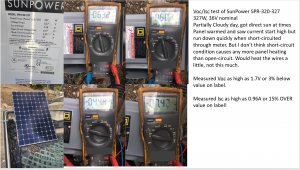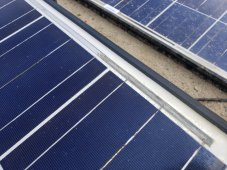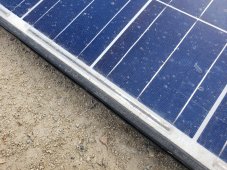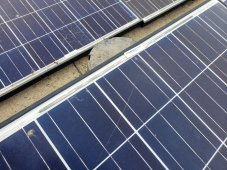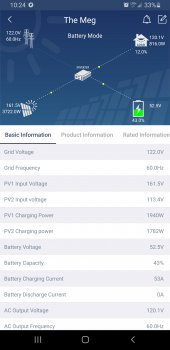If these are bargain panels from SanTan, are they originally Trina?
Apparently Trina had a quality issue a while back, leakage from PV circuit to frame. They replaced entire arrays of panels under warranty and presumably fixed the process issue.
That could explain how panels with labels stripped off reached the used market. Maybe they perform with varying degree of reliability depending on the environment they get deployed to, and what they had already absorbed.
SanTan has of course tested functionality/output, but may not have tests to show latent issues?
Panels are supposed to be reliable in almost any environment, but results have varied.
I would make sure the panels always have frames grounded for safety.
Hopefully SanTan replaces them, or maybe lets you apply purchase price to a different model.



